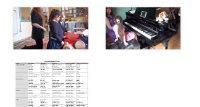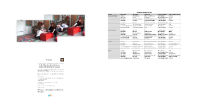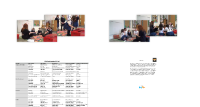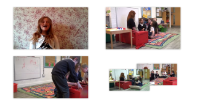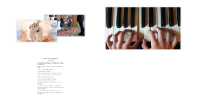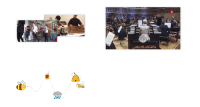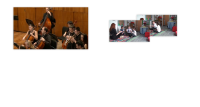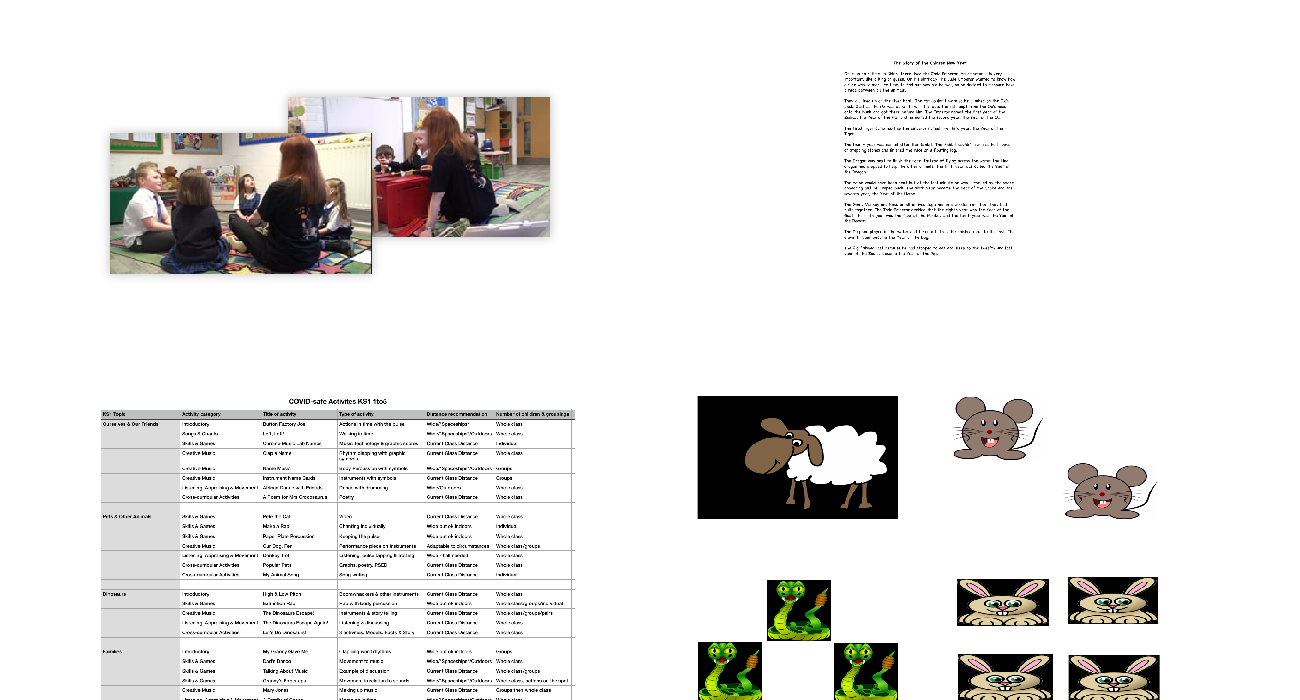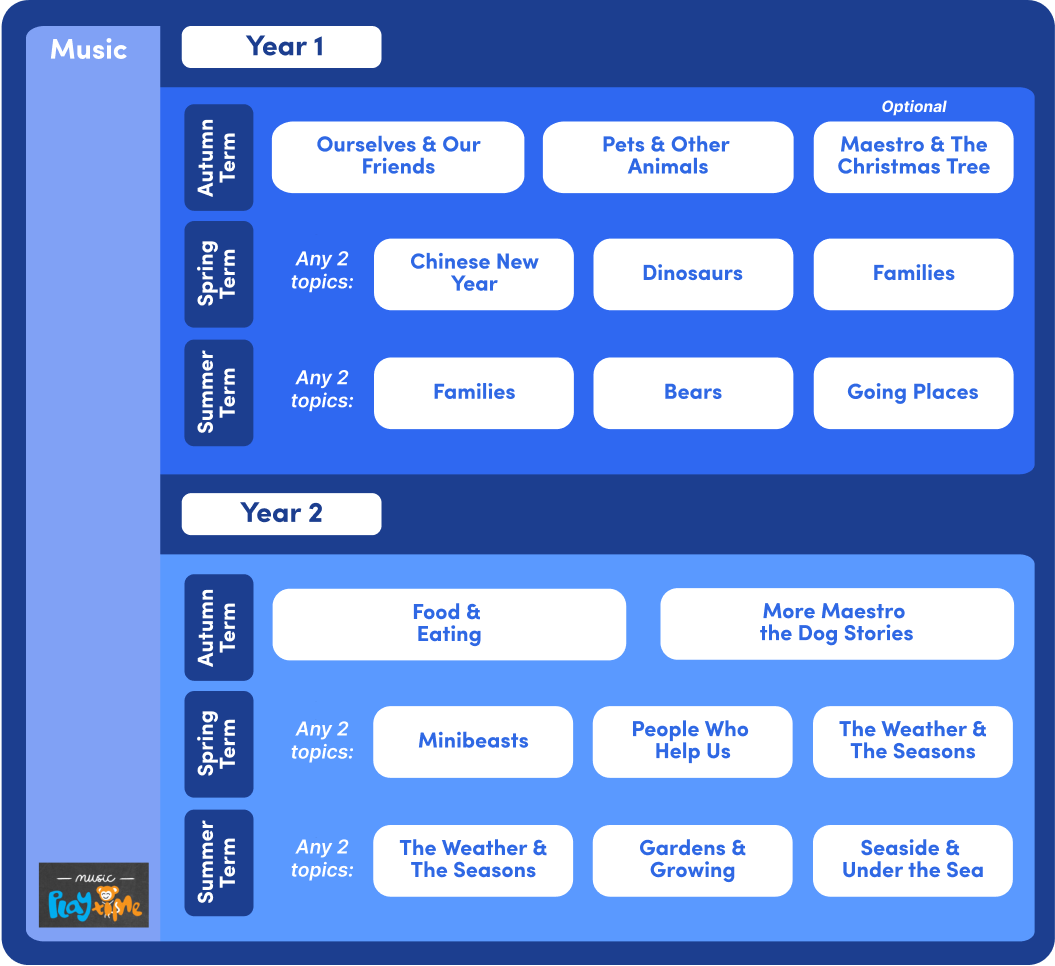Chinese New Year Level: Key Stage 1

The Chinese Zodiac Story
Remind the children of the Chinese Zodiac story by showing them this video:
You could stage your own Chinese New Year puppet show for an assembly!

Grazing Cows Song
This is a traditional Chinese song. You'll need to learn it really thoroughly before teaching it and then adopt a first me, then you method. When the children know the song, you could make a sound recording and ask the them if there is any way they could improve their singing:
- Did everyone join in?
- Does the singing sound beautiful?
- Is it in tune - are there any notes that don't sound right?
- Did it keep going well?
Make a second recording and compare. Which one did the children like better, and why. Another way of reflecting on a performance is for half the class to sing at a time and the other half to do Two Stars and a Wish - say two things they liked about the singing and give one positive suggestion for improving.
- Early in the morning
- See the sun a dot of red
- Brother riding on a horse
- Sister on a dragon
- __
- Climbing up the mountain
- See the clouds are flying
- Brother play the flute all day
- Sister watch the clouds
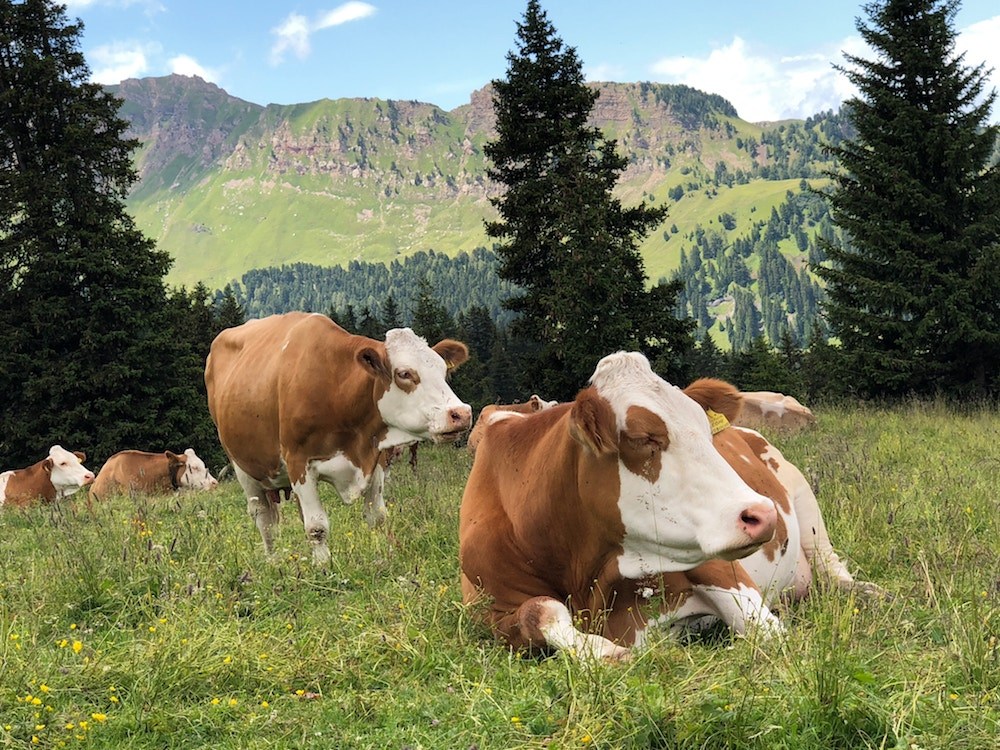
My Ship Sailed from China
The children can invent actions to this song. They might also make up extra verses for 'They brought me a ...'
- My ship sailed from China
- With a cargo of tea
- All laden with presents
- For you and for me
- They brought me a fan
- Just imagine my bliss
- When I fan myself gently
- Like this, like this, like this, like this

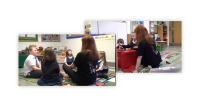
What Shall We Do with A Chinese Dragon? (pulse, pitch)
This song uses the tune of What Shall We Do With a Drunken Sailor?, which has such a good tune but is now thought to be unsuitable for use in school due to the associations with alcohol.
Teaching How to Keep in Time
The skill to be practised here is that of playing in time to accompany the song. First teach the son using the First Me, Then You method explained in the FAQs section. Once the song is known, the first step is to practise tapping the pulse on knees.
Teaching Which Notes to Play
If the children are new to playing instruments to accompany their singing, the activity will need careful explanation and modelling. The best instruments to use are individual chime bars because the children can concentrate just on the timing having too look carefully which notes to play. If you are using xylophones with removable bars, it helps to take off the bars not being used (be sure they are put back because they are easily lost).
Two notes are needed to accompany this song, D (for dragon) and C (for Chinese). D sounds right for most of the song but, for two phrases, it clashes with the tune and you need to change to C - see below which note to play when. Children do pick this up well if they have a visual cue and it need not be difficult to achieve - here, I’ve simply used little bears to show the pattern and the children latch onto it straight away.
- What shall we do with a Chinese dragon? (D)
- What shall we do with a Chinese dragon? (C)
- What shall we do with a Chinese dragon? (D)
- Early in the (C) morning (D)
- __
- Polish her scales and make them shiny (D)
- Polish her scales and make them shiny (C)
- Polish her scales and make them shiny (D)
- Early in the (C) morning (D)
- __
- Ask her what she'd like to eat for breakfast (D)
- Ask her what she'd like to eat for breakfast (C)
- Ask her what she'd like to eat for breakfast (D)
- Early in the (C) morning (D)
- ©Music-Playtime: Arts Enterprise Limited
Extension - Make up an intro (rhythm, pitch)
Help the children to make up an intro to each verse using just the notes D and A and some untuned percussion instruments, based on the word pattern of Here's a Chinese Dragon.
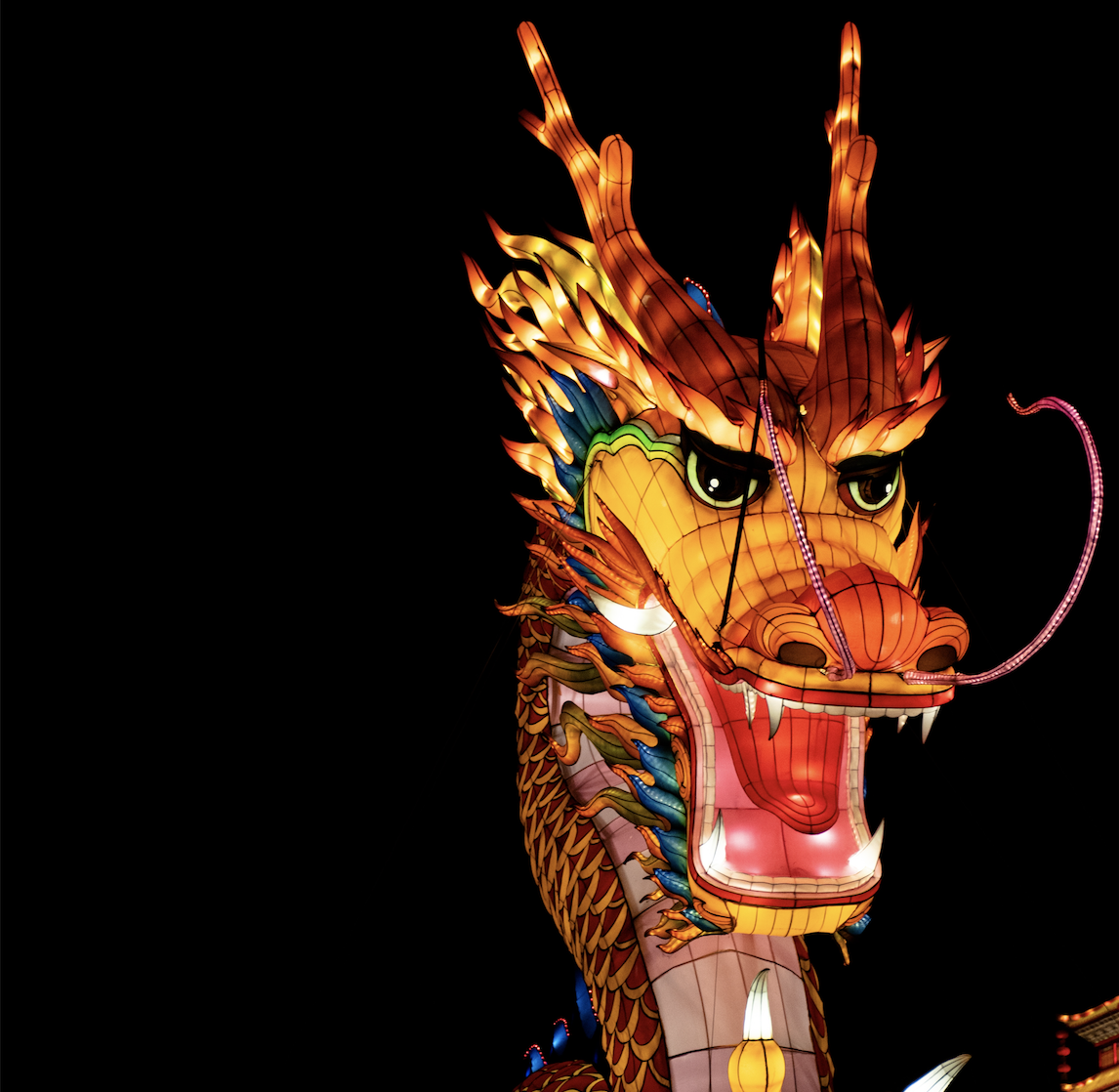
Cat and Mouse (rhythm, pulse)
This is a traditional Chinese children's chanting game for which you need a large space. One child is the Cat and one child is the Mouse. All the other children form a circle, holding hands, with the Mouse inside and the Cat outside.
Teach the chant first, making sure it sounds rhythmical. The children could first clap in time, before practising walking in time to it (most will find clapping in time easier than walking in time).
When the chant is known, the children circle round, chanting:
- What's the time?
- A quarter to nine
- What's the cat doing?
- She's ready to dine
When the rhyme stops, the children stop and the Cat starts to chase the Mouse, who weaves in and out of the ring of children. The Cat MUST follow the mouse's path. When the Cat catches the Mouse she can pretend to ‘eat’ him. Say the rhyme again as two more children take a turn.
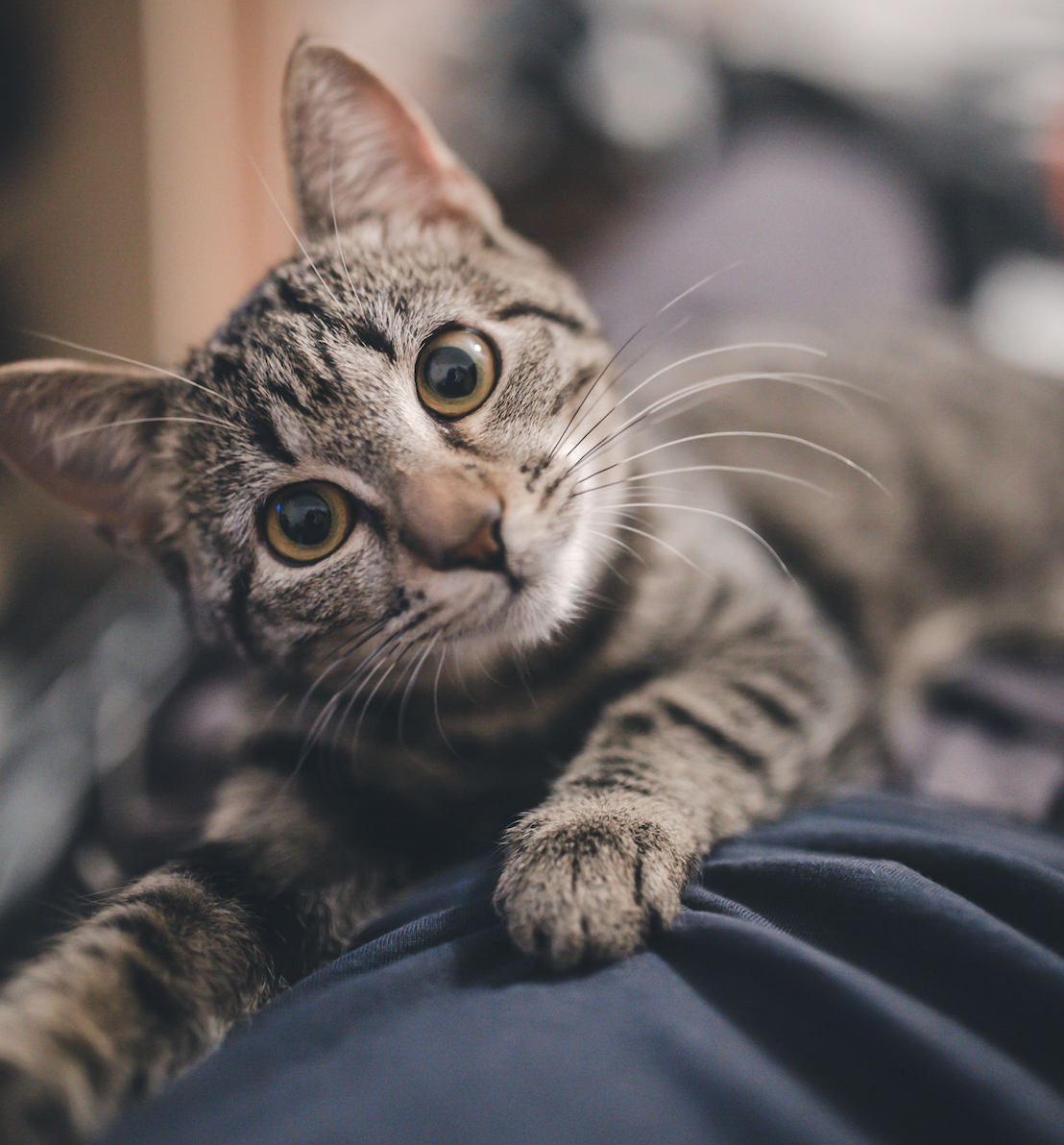

Dragon's Tail Soundscape using body sounds (structure, dynamics)
The children first explore making as many sounds as possible with just their bodies eg clap, vocal noises, brush hands together, stamp. Allocate each sound to a individual children, or to pairs of children, depending on the groups size. Help the children to decide which sounds are loudest and which are quietest then put the children in a row, in order of loudest to quietest sounds.
If you are working with a whole class, you can do a kind of 'Mexican Wave' dragon's tail in sound by pointing along a long row of children; start loudly, then each child makes their sound a little quieter than the one before it, going from head to tail of the dragon. You could then try the soundscape in reverse, from the tip of the tail to the dragon's head.
Extension
This activity can be transferred effectively to doing the same thing using untuned, hand-held musical instruments. You can also have fun using just voices, with movement from crouching low to gradually standing tall as the sound grows gradually into a big roar!
Dragon's Tail Sculpture (texture)
This activity focuses on texture, which goes from thick to thin, or from thin to thick, depending on which end of the dragon's tail we start with!
The Twelve Animals of the Zodiac (timbre, structure, silence, tempo)
The poem is to be learned by heart and then chanted by the whole class. At the end of each line, ask the children to imagine saying the line again silently, at the same speed as before.
Next, allocate instruments that represent each animal to groups of children eg the rats have shakers, the oxen have bells. Each group makes their sound where, before, there was silence as shown below in the first line of the poem:
- First the Rat then Second Ox (shhhaake ... ding ....)
- Third the tired Tiger
- Fourth the Rabbit hopped along
- Fifth the Dragon, kind and strong
- Sixth the Snake and Seventh Horse
- Eighth the Goat of course
- Ninth the Monkey, Tenth the Rooster
- Last but one the Dog
- Twelfth the Pig who stopped to eat
- Now the Zodiac's complete
- __
- ©Music-Playtime: Arts Enterprise Limited
The point is to occupy the previous silence with sound, not necessarily to copy the rhythms of the words. You'll need to insist that the instruments are kept still until it's time to play - the silence practice will have prepared the children well for this!
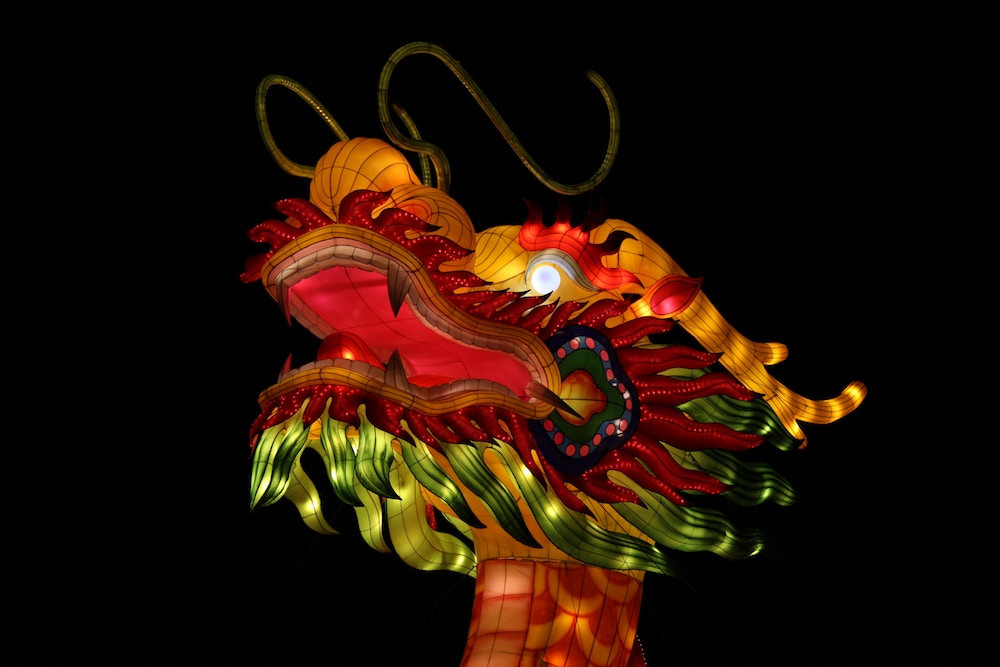

Floaty Scarf Music! (timbre)
Before the the children watch this video of someone playing the Chinese zither, it's a good idea to focus their listening by explaining what you are going to ask them at the end. These are possible questions:
- Which instrument is playing?
- Is this a Chinese instrument, or not?
- Think of words to describe the music – (eg. is it quiet, restful, peaceful, loud, lively, jumpy?)
- Was the tempo fast or slow?
Before the children listen to the music again, give out floaty dance scarves for them to make graceful patterns in the air according to how the music sounds. You can buy these cheaply online. The surest way to get a sensitive response from the children is for you to dance with a floaty scarf too - go on, you'll enjoy it!

The Year of the Dog!
It's a good idea to prepare the children for what you will ask after they have watched the video. As you hear what the children have to say, you can praise perceptive answers and also take the opportunity to supply some Elements of Music words, like this:
- Child: It was high and then low
- Teacher: Yes, the pitch was often high and there were also a few, very low-pitched notes.
Here are some suggestions for questions and talking points:
- Which instrument was playing? (Piano)
- Can you think of some words to describe the music? (eg - is it trickling, low, quiet, rumbling, tinkly.)
Creative Extension
The tunes here were based on a pentatonic scale, giving them a 'Chinese' flavour. The children could experiment, individually or in pairs, with using just the black keys of an electronic keyboard or piano to make up 'Chinese' music. Giving a focus usually produces more worthwhile tunes: in pairs one child could ask the 'question', 'What is your name?' using just black keys and the second child could answer, 'My name is ...', again using only black keys. They could also experiment with playing more than one note at a time. The idea is to make up something original rather than attempt to play a tune they already know.

Chinese Lanterns (art link)
Each child needs:
- a sheet of coloured paper, A4 size
- jewel shapes
- safety scissors
- glue
- one strip of paper for the handle
First the children fold the paper in half. They cut strips, around 1cm apart, along the folded edge and stick the jewels round the edge. Next, the paper is opened out and rolled it into a cylinder, which is fastened with glue down the edge. Finally, the teacher staples on the paper strip to form a handle (this could be stuck but it's not as firm a solution). A collection of lanterns makes a great display!
A pretty variation is to use white paper instead, with black wax crayons and finger paints - first the children draw a tree using a black crayon, then they dab on the blossom using finger paints.
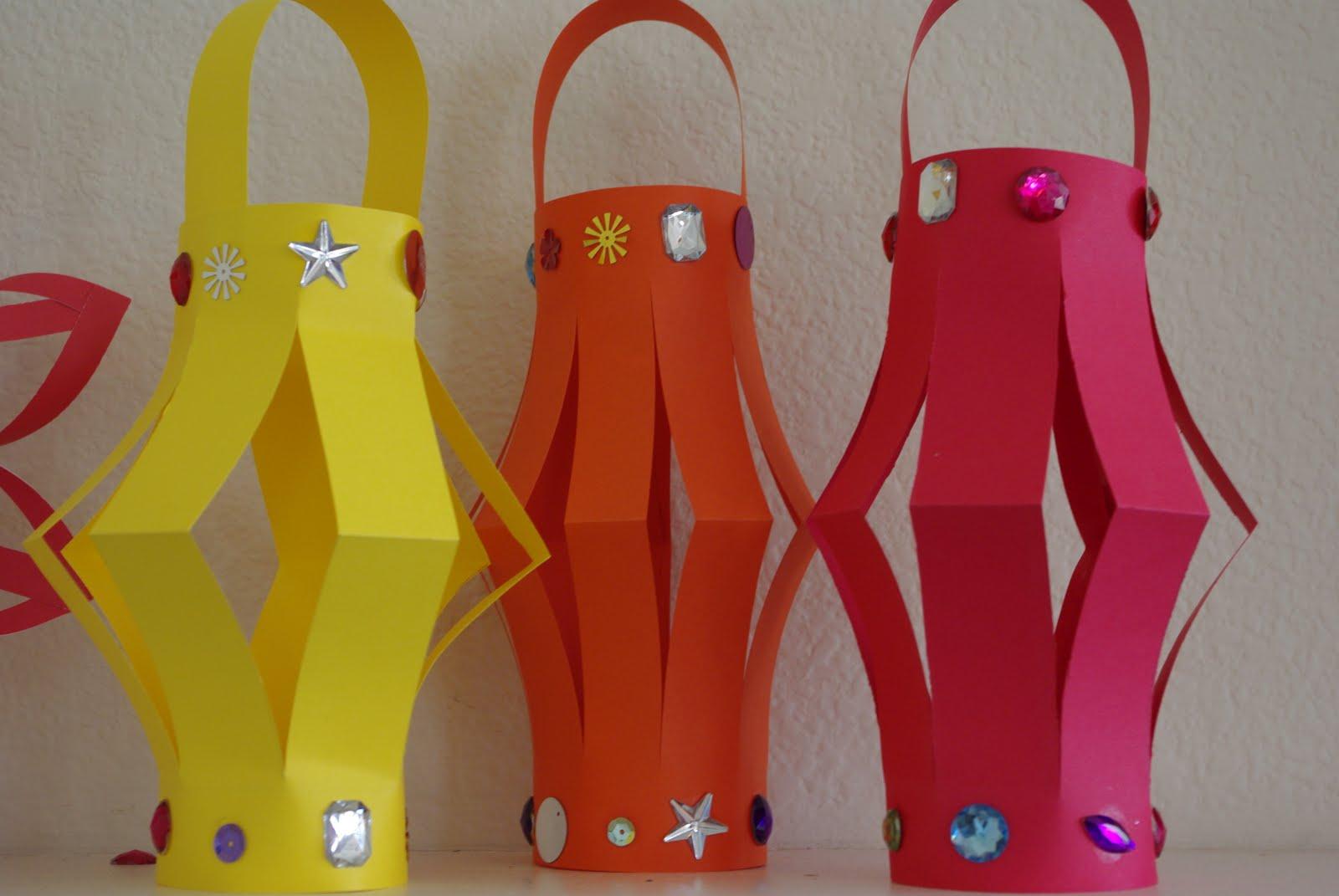
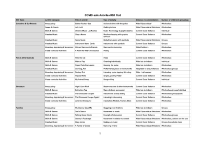
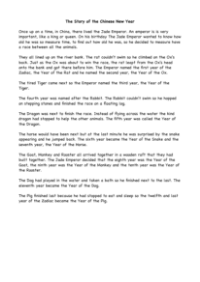
The Chinese Zodiac Story
Tell the story of how the Jade Emperor chose the animals of the Chinese New Year.

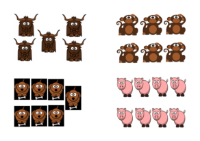
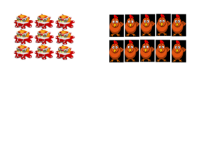
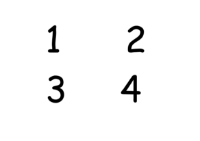

The Chinese Zodiac Story
Remind the children of the Chinese Zodiac story by showing them this video:
You could stage your own Chinese New Year puppet show for an assembly!

Grazing Cows Song
This is a traditional Chinese song. You'll need to learn it really thoroughly before teaching it and then adopt a first me, then you method. When the children know the song, you could make a sound recording and ask the them if there is any way they could improve their singing:
- Did everyone join in?
- Does the singing sound beautiful?
- Is it in tune - are there any notes that don't sound right?
- Did it keep going well?
Make a second recording and compare. Which one did the children like better, and why. Another way of reflecting on a performance is for half the class to sing at a time and the other half to do Two Stars and a Wish - say two things they liked about the singing and give one positive suggestion for improving.
- Early in the morning
- See the sun a dot of red
- Brother riding on a horse
- Sister on a dragon
- __
- Climbing up the mountain
- See the clouds are flying
- Brother play the flute all day
- Sister watch the clouds

My Ship Sailed from China
The children can invent actions to this song. They might also make up extra verses for 'They brought me a ...'
- My ship sailed from China
- With a cargo of tea
- All laden with presents
- For you and for me
- They brought me a fan
- Just imagine my bliss
- When I fan myself gently
- Like this, like this, like this, like this


What Shall We Do with A Chinese Dragon? (pulse, pitch)
This song uses the tune of What Shall We Do With a Drunken Sailor?, which has such a good tune but is now thought to be unsuitable for use in school due to the associations with alcohol.
Teaching How to Keep in Time
The skill to be practised here is that of playing in time to accompany the song. First teach the son using the First Me, Then You method explained in the FAQs section. Once the song is known, the first step is to practise tapping the pulse on knees.
Teaching Which Notes to Play
If the children are new to playing instruments to accompany their singing, the activity will need careful explanation and modelling. The best instruments to use are individual chime bars because the children can concentrate just on the timing having too look carefully which notes to play. If you are using xylophones with removable bars, it helps to take off the bars not being used (be sure they are put back because they are easily lost).
Two notes are needed to accompany this song, D (for dragon) and C (for Chinese). D sounds right for most of the song but, for two phrases, it clashes with the tune and you need to change to C - see below which note to play when. Children do pick this up well if they have a visual cue and it need not be difficult to achieve - here, I’ve simply used little bears to show the pattern and the children latch onto it straight away.
- What shall we do with a Chinese dragon? (D)
- What shall we do with a Chinese dragon? (C)
- What shall we do with a Chinese dragon? (D)
- Early in the (C) morning (D)
- __
- Polish her scales and make them shiny (D)
- Polish her scales and make them shiny (C)
- Polish her scales and make them shiny (D)
- Early in the (C) morning (D)
- __
- Ask her what she'd like to eat for breakfast (D)
- Ask her what she'd like to eat for breakfast (C)
- Ask her what she'd like to eat for breakfast (D)
- Early in the (C) morning (D)
- ©Music-Playtime: Arts Enterprise Limited
Extension - Make up an intro (rhythm, pitch)
Help the children to make up an intro to each verse using just the notes D and A and some untuned percussion instruments, based on the word pattern of Here's a Chinese Dragon.

Cat and Mouse (rhythm, pulse)
This is a traditional Chinese children's chanting game for which you need a large space. One child is the Cat and one child is the Mouse. All the other children form a circle, holding hands, with the Mouse inside and the Cat outside.
Teach the chant first, making sure it sounds rhythmical. The children could first clap in time, before practising walking in time to it (most will find clapping in time easier than walking in time).
When the chant is known, the children circle round, chanting:
- What's the time?
- A quarter to nine
- What's the cat doing?
- She's ready to dine
When the rhyme stops, the children stop and the Cat starts to chase the Mouse, who weaves in and out of the ring of children. The Cat MUST follow the mouse's path. When the Cat catches the Mouse she can pretend to ‘eat’ him. Say the rhyme again as two more children take a turn.


Dragon's Tail Soundscape using body sounds (structure, dynamics)
The children first explore making as many sounds as possible with just their bodies eg clap, vocal noises, brush hands together, stamp. Allocate each sound to a individual children, or to pairs of children, depending on the groups size. Help the children to decide which sounds are loudest and which are quietest then put the children in a row, in order of loudest to quietest sounds.
If you are working with a whole class, you can do a kind of 'Mexican Wave' dragon's tail in sound by pointing along a long row of children; start loudly, then each child makes their sound a little quieter than the one before it, going from head to tail of the dragon. You could then try the soundscape in reverse, from the tip of the tail to the dragon's head.
Extension
This activity can be transferred effectively to doing the same thing using untuned, hand-held musical instruments. You can also have fun using just voices, with movement from crouching low to gradually standing tall as the sound grows gradually into a big roar!
Dragon's Tail Sculpture (texture)
This activity focuses on texture, which goes from thick to thin, or from thin to thick, depending on which end of the dragon's tail we start with!
The Twelve Animals of the Zodiac (timbre, structure, silence, tempo)
The poem is to be learned by heart and then chanted by the whole class. At the end of each line, ask the children to imagine saying the line again silently, at the same speed as before.
Next, allocate instruments that represent each animal to groups of children eg the rats have shakers, the oxen have bells. Each group makes their sound where, before, there was silence as shown below in the first line of the poem:
- First the Rat then Second Ox (shhhaake ... ding ....)
- Third the tired Tiger
- Fourth the Rabbit hopped along
- Fifth the Dragon, kind and strong
- Sixth the Snake and Seventh Horse
- Eighth the Goat of course
- Ninth the Monkey, Tenth the Rooster
- Last but one the Dog
- Twelfth the Pig who stopped to eat
- Now the Zodiac's complete
- __
- ©Music-Playtime: Arts Enterprise Limited
The point is to occupy the previous silence with sound, not necessarily to copy the rhythms of the words. You'll need to insist that the instruments are kept still until it's time to play - the silence practice will have prepared the children well for this!


Floaty Scarf Music! (timbre)
Before the the children watch this video of someone playing the Chinese zither, it's a good idea to focus their listening by explaining what you are going to ask them at the end. These are possible questions:
- Which instrument is playing?
- Is this a Chinese instrument, or not?
- Think of words to describe the music – (eg. is it quiet, restful, peaceful, loud, lively, jumpy?)
- Was the tempo fast or slow?
Before the children listen to the music again, give out floaty dance scarves for them to make graceful patterns in the air according to how the music sounds. You can buy these cheaply online. The surest way to get a sensitive response from the children is for you to dance with a floaty scarf too - go on, you'll enjoy it!

The Year of the Dog!
It's a good idea to prepare the children for what you will ask after they have watched the video. As you hear what the children have to say, you can praise perceptive answers and also take the opportunity to supply some Elements of Music words, like this:
- Child: It was high and then low
- Teacher: Yes, the pitch was often high and there were also a few, very low-pitched notes.
Here are some suggestions for questions and talking points:
- Which instrument was playing? (Piano)
- Can you think of some words to describe the music? (eg - is it trickling, low, quiet, rumbling, tinkly.)
Creative Extension
The tunes here were based on a pentatonic scale, giving them a 'Chinese' flavour. The children could experiment, individually or in pairs, with using just the black keys of an electronic keyboard or piano to make up 'Chinese' music. Giving a focus usually produces more worthwhile tunes: in pairs one child could ask the 'question', 'What is your name?' using just black keys and the second child could answer, 'My name is ...', again using only black keys. They could also experiment with playing more than one note at a time. The idea is to make up something original rather than attempt to play a tune they already know.

Chinese Lanterns (art link)
Each child needs:
- a sheet of coloured paper, A4 size
- jewel shapes
- safety scissors
- glue
- one strip of paper for the handle
First the children fold the paper in half. They cut strips, around 1cm apart, along the folded edge and stick the jewels round the edge. Next, the paper is opened out and rolled it into a cylinder, which is fastened with glue down the edge. Finally, the teacher staples on the paper strip to form a handle (this could be stuck but it's not as firm a solution). A collection of lanterns makes a great display!
A pretty variation is to use white paper instead, with black wax crayons and finger paints - first the children draw a tree using a black crayon, then they dab on the blossom using finger paints.



The Chinese Zodiac Story
Tell the story of how the Jade Emperor chose the animals of the Chinese New Year.








